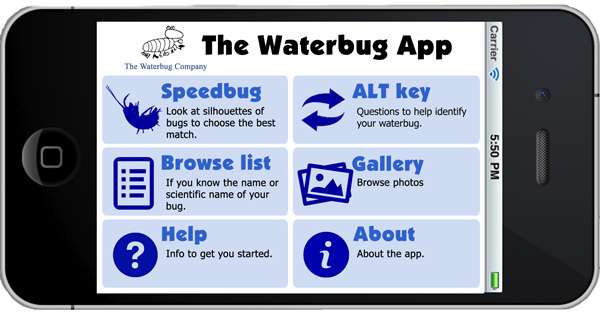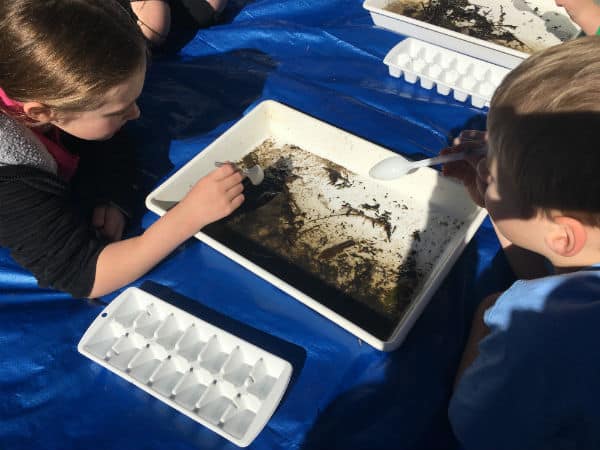
You might have heard of Streamwatch, a long-standing citizen science initiative that empowers students & community volunteers to monitor the health of local waterways and thereby provide early warning for pollution events for authorities. Well, now you can join the National Waterbug Blitz! Funded by Inspiring Australia and supported by the Centre for eResearch & Digital Innovation (CeRDI), Federation University, The Waterbug Trust and the Waterbug Shop, this nation-wide program is designed to work in tandem with the Waterbug App so that anyone in Australia can help ecologists in creating an online database of what is happening in our country’s rivers, streams, ponds and more.

Image: The Waterbug Company
Why Waterbugs?
Well, technically not all the invertebrates that you find in a freshwater sample are actually bugs. You can find a massive variety of insect larvae, worms and crustaceans in any given sample. There are many factors that affect the community of invertebrates founds within a given waterway:
- water temperature
- dissolved oxygen levels
- water speed
- nitrates and phosphates
- sediment type and size
- heavy metals and other pollutants
- turbidity
- …. & much more
Invertebrates found within freshwater areas are bio-indicators of the local environment. Changes in the presence, or lack of presence, of a given population of invertebrate species, can tell warn scientists that the water may well be polluted and therefore warrant further investigation and potential remediation of the area.
Dipnetting & species identification
Being careful not to scrape along the sediment, you can use dipnets to sample invertebrates amongst reeds and rocky areas to get a strong sample of the benthic invertebrates present in the area. Be sure to keep the dipnet moving constantly during the sample so that the invertebrates don’t manage to escape!
With supervision, you can also stand the dipnet upright in the water against the sediment whilst carefully rubbing your foot against the sediment upstream… this allows attached benthic invertebrates to come loose and float downstream into the dipnet. From there it’s just a matter of sorting looking through the samples to find the various wiggling creatures!

Once you find an invertebrate, gently use plastic spoons or ask an adult to help use a plastic pipette to transfer the specimen into an ice cube tray. With help of a handheld magnifier, the Waterbug app and some waterbug identification books you can quickly work out the types of invertebrates you have using keys and submit this information through the app for data collation in the National Waterbug Blitz! If you’re curious about how the identification can be standardised across so many people involved in the program, scientists have chosen to use the agreed taxonomy method to help with keeping the data generated free of errors.
National Waterbug Blitz Events
- Held in October 2018 & 2019
- Get involved!
NEW Primary science teaching book!
“Be Amazing! How to teach science, the way primary kids love”



























Comments